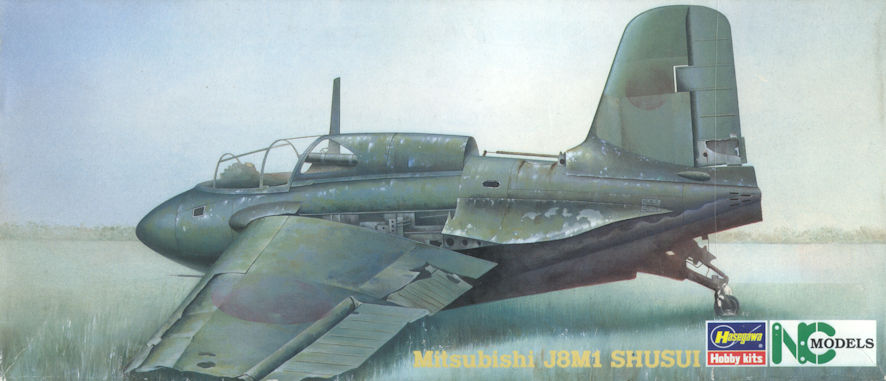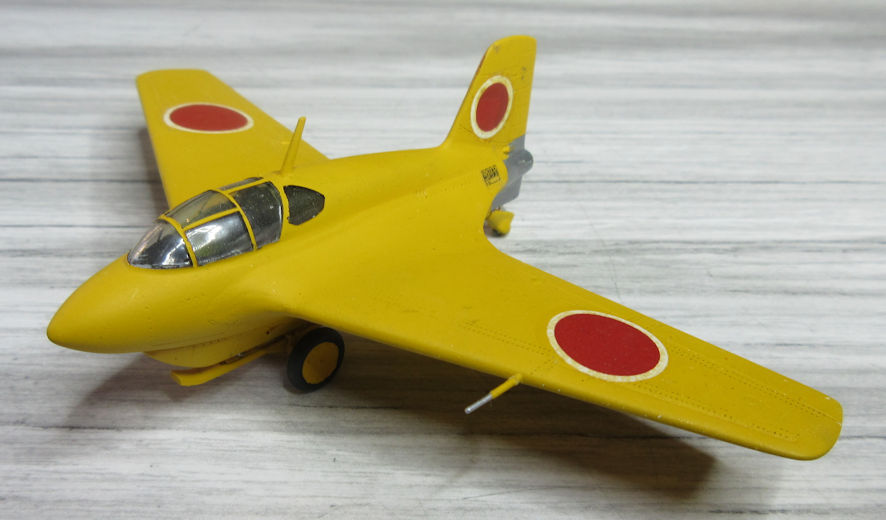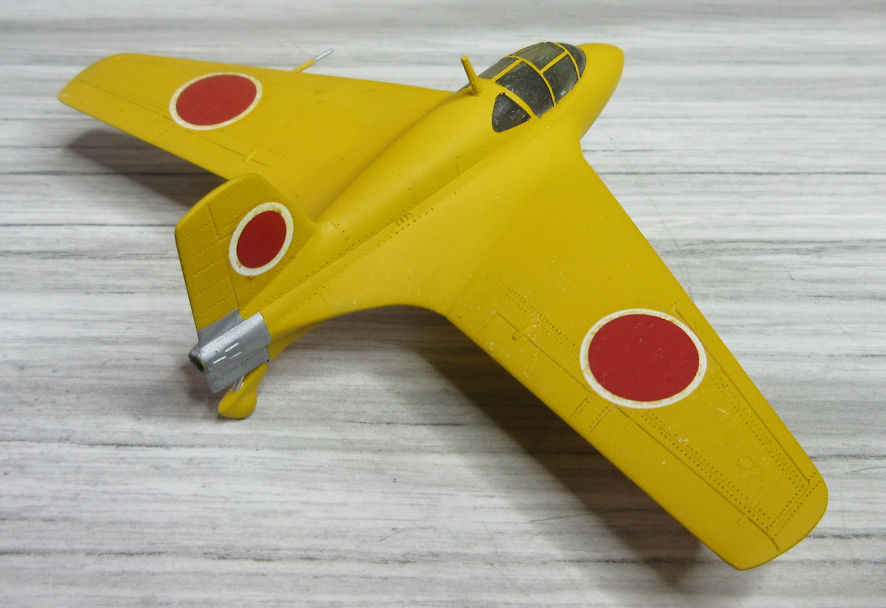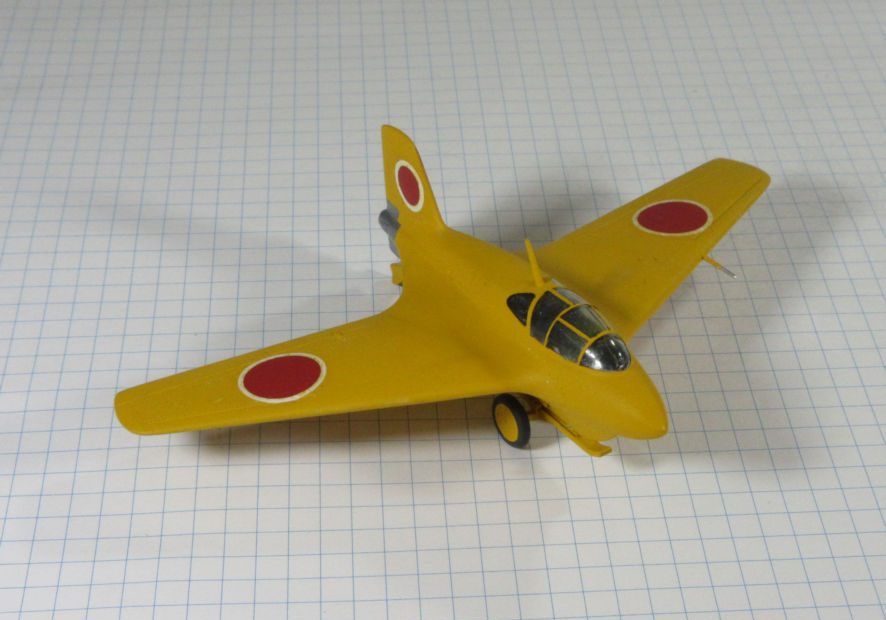In the autumn of 1943 Japanese officials in Germany witnessed a demonstration of the Messerchmitt Me163 rocket interceptor but the technology seemed too advanced and different from Japanese capabilities to be of interest. However, in 1944 when American bombers were beginning to reach the Japanese homeland, the idea of a rapidly climbing interceptor was more attractive and Japan paid 20 million Reichmarks for the rights to manufacture the Me163 and its Walther rocket motor and for examples and plans of both. These were made available in March and April 1944 and sent to Japan in two submarines but the one containing the airframe and rocket motor was sunk so only the one carrying plans reached Singapore in July 1944 and they were sent immediately to Japan. The engineers there discovered the plans were not complete and that making a copy of the Me163 was going to be much more difficult than expected so a firm decision to go ahead with the project was not made until August 1944.
Both the Japanese Navy and Army were to make and operate the interceptor, the Navy version being manufactured by Mitsubishi with the designation J8M1 and the Army version with the designation Ki200, both named Shusui (Sword Stroke).
Despite the decision that the airframe would be tightly based on the Messerchmitt design Mitsubishi engineers made a number of changes, one of them being to widen of the wing roots to accommodate the larger Japanese cannon, giving the aeroplane a wider wing span. In general, however, the development of the airframe presented few problems and test pilots of the light and heavy gliders developed around the design were impressed by its performance and handling, the first flight being accomplished on 8 January 1945. Delays were caused by American bombing but the real delay came with the rocket engine and a reasonable version was not ready for flight until mid June 1945.
The first J8M1 was ready for flight on 7 July and it climbed spectacularly to about 350 metres (1640ft) before the engine failed. The pilot brought the aeroplane back to the landing field safely but crashed during landing and was killed. (The cause of the accident was fuel starvation, the same thing that had caused problems with early Me163 flights.) That problem was solved and plans were in hand for production and development of Navy and Army versions but the end of the war in August 1945 meant there were no further flights. It was just over a year and a month between the arrival of the data by submarine and the end of the war, the Japanese achievement in producing a flying prototype in such a short time had been phenomenal.

Hasegawa produces endless streams of high quality kits of all the classic military aviation aeroplanes, P-51s, A6Ms, Bf109s and so on in vast variety of marks and markings. They are renowned for their high quality and generally high cost. However, from time to time the company seems to go berserk and indulge itself in making kits of amazingly obscure aeroplane types – one example I have is their Vought XF5U that I only saw on the shelves once, paid a fortune for, never regretted it and have never seen again (and their Kyushu J7W1 which you may see rarely). Their J8M1 seems to be have come from the same brainstorm.
This is a very well engineered kit in which everything fits with military precision with almost no need for filler or the usual tinkering. Surface details is about as good as you are likely to find on any plastic kit with outstandingly delicate surface finish including rivets that are perhaps just a hint overstated. In its own way this kit is as good as the Academy Me163 though with different emphasis – Hasegawa with crisper surface work and Academy with greater attention to fine details such as the cockpit.
It is the cockpit that lets this J8M1 kit down, being very basic in comparison to the exceptional detail of the Me163 kit. There is no pilot seat, a poor instrument panel and gaps all over the place so you can see right through the canopy out the hole where the landing skid goes. A really keen modeller could scratch build a decent cockpit using the cutaway drawing in Air International of June 1976 but I simply fell back on Plan B and painted the whole lot flat black so you can’t see how miserable it is.
The kit offers two versions, the prototype and a production aeroplane. The main difference between then is that the prototype was not armed so you don’t install the cannons and instead fill the holes for them in the wing leading edge (a simpler solution would have been to instal them and then just trim them off, but I didn’t think of that until I had done it the hard way). The prototype is overall yellow while the production version is the usual green upper side with silver undersurfaces. In theory the yellow version is easier but in my kit the decals were dodgy with the white in the markings being decidedly on the cream side. I replaced them with some decals out of the faithful old spares box which are almost (but not quite) the right size although the colour is much better.
After a coat of matt varnish all that was needed to finish the model off was a coat of metalizer stainless steel around the rocket exhaust. The end result looks lovely, perhaps even more elegant than the Me163B. I couldn’t recommend this kit without reservation (if you can find one) because of its cost and poor cockpit. I see MPM have released a kit of the J8M1 which might take care of both those problems. In any event, I’m pleased with the end result.


Leigh Edmonds
December 2001
